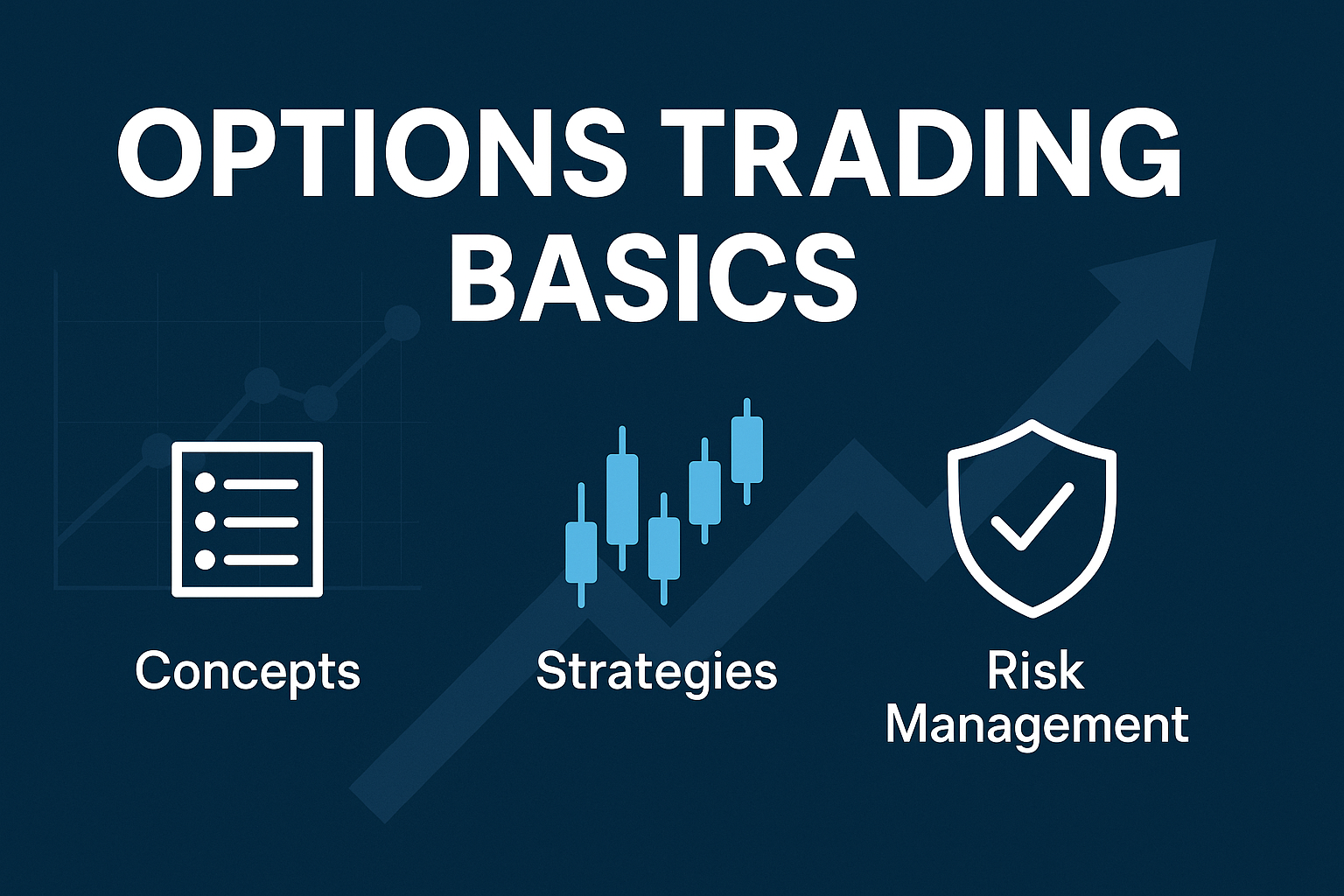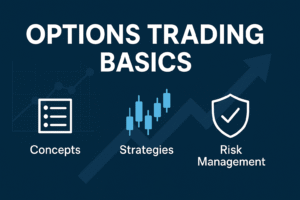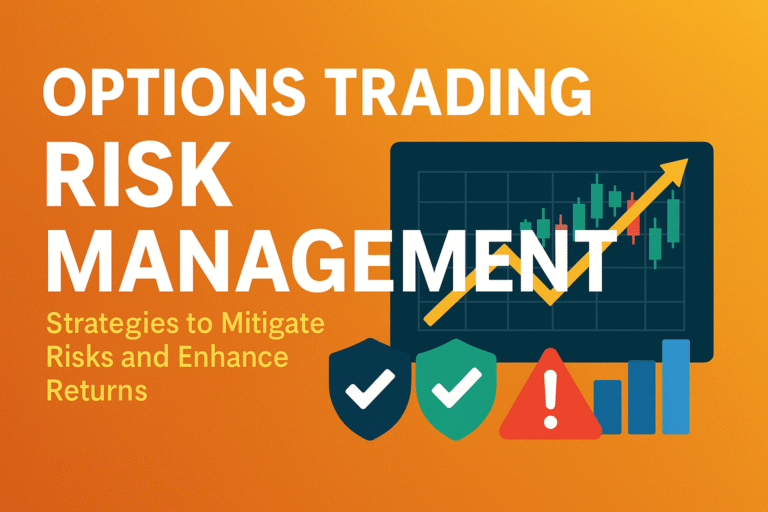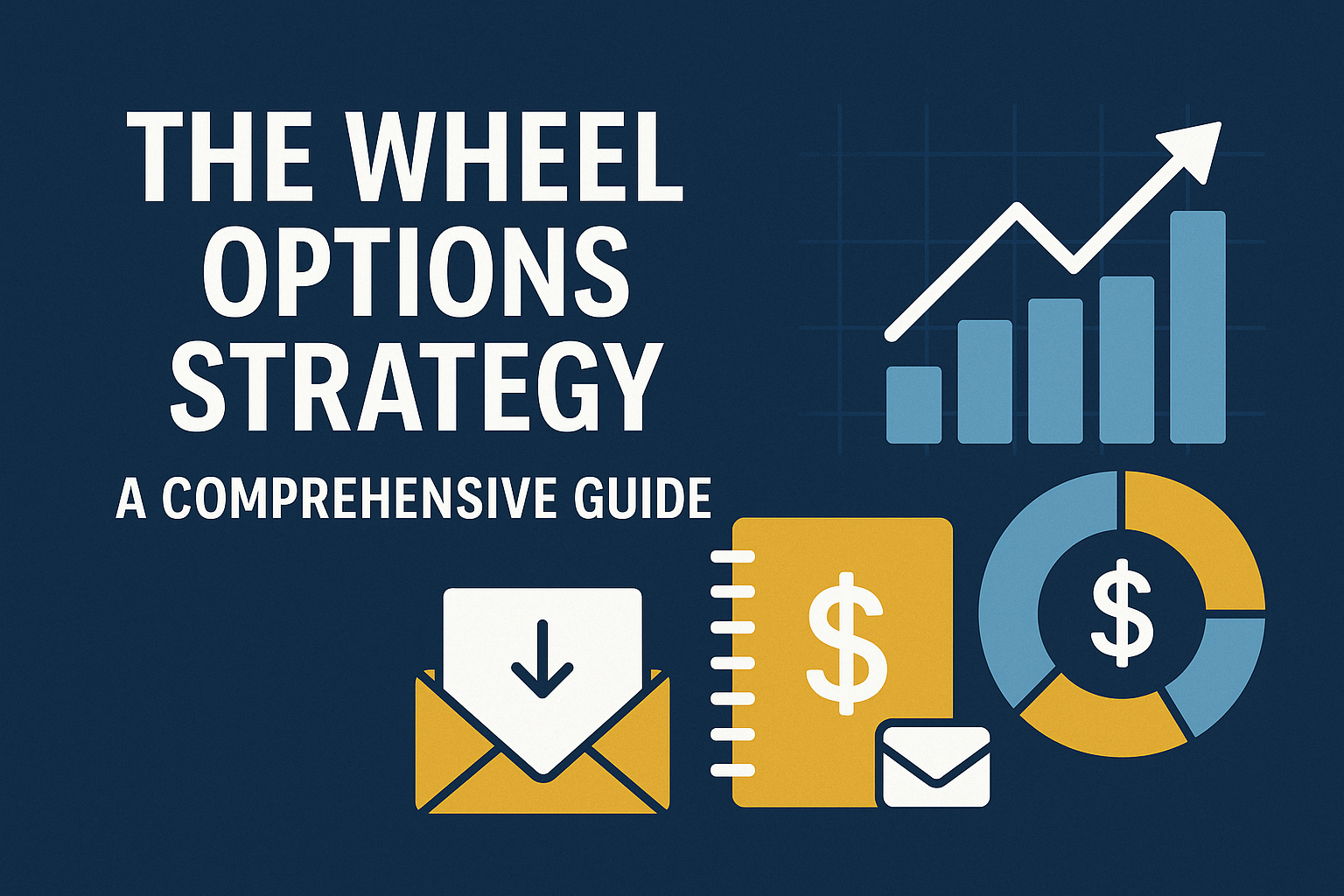Options Trading Basics: A Comprehensive Guide for Beginners
Introduction
Understanding options trading basics is essential for anyone looking to diversify their investment portfolio and tap into the market’s potential. You might wonder, “What is options trading?” In this beginner-friendly guide, we’ll walk you through the fundamentals, starter methods, and key risk control techniques.
By the end of this guide, you’ll understand:
- What options trading is and how it works
- Key terms every beginner should know
- Simple strategies to get started
- The pros and cons, and where to keep learning
What Is Options Trading?
Options are financial contracts that give the buyer the right—but not the obligation—to buy or sell an asset at a specific price before a set expiration date. Unlike buying stock, you’re not purchasing shares directly. You’re buying a contract tied to an underlying asset—like a stock or ETF—but not the asset itself.
Need a visual guide? Watch our Options Trading Basics explainer video on YouTube.
Purpose and Advantages of Options
- Hedging – Protect your portfolio from downside risk
- Leverage – Control more with less capital
- Speculation – Profit from predicting market moves
Other Advantages
- Flexibility: Options work in rising, falling, or sideways markets
- Lower Initial Cost: Often more affordable than buying shares outright
- Strategic Risk Management: Options can help you limit or offset losses in your portfolio
Key Concepts in Options Trading
Call Options
- What It Is: Gives the buyer the right to buy a stock at a specified price (strike price) before expiration
- When to Use: When you believe the stock price will rise
Put Options
- What It Is: Gives the buyer the right to sell a stock at the strike price before expiration
- When to Use: When you expect the stock price to fall
Options Contracts
A single options contract typically represents 100 shares of the underlying stock. Buyers pay a premium to acquire this right.
How Options Work
What Affects Option Prices?
- Current price of the stock
- Strike price
- Time left until expiration
- Market volatility
These elements collectively determine the value of the options contract.
In the Money vs. Out of the Money
- In the Money (ITM): The option has intrinsic value and would be profitable if exercised now
- Out of the Money (OTM): The option wouldn’t be profitable at the current moment
Key Terms in Options Trading Basics
- Strike Price: The agreed-upon price to buy (call) or sell (put)
- Expiration Date: The final day the option can be used
- Premium: The cost of buying the option
- In-the-Money / Out-of-the-Money: Whether the option is profitable based on current market conditions
Options Trading Basics for Beginners
How to Get Started (see our full post on how to start investing with limited time)
- Choose a Brokerage: Ensure it supports options trading, offers low fees, and has educational tools.
- Understand Account Approval: You’ll fill out a form outlining your experience and risk tolerance. Brokers assign a trading level that determines which strategies you can use.
- Begin with Simple Strategies:
- Covered Calls: Earn income by selling a call option on a stock you already own
- Protective Puts: Buy a put to guard against a drop in a stock you own
Efficient investing tips for busy investors
- Learn through courses, guides, and tutorials like those from Bankrate
- Practice with paper trading using simulated accounts
- Start small to minimize early risk
- Define your exit plan before entering a trade (See Ally’s beginner guide)
Advantages and Risks of Options Trading
Advantages
- Use leverage to maximize potential gains
- Profit in any market direction
- Strategically manage portfolio risk
Risks
- You can lose the entire premium
- Options are more complex than stock trading
- Time decay reduces an option’s value as it nears expiration
Managing Risk in Options Trading
- Predefine your entry and exit rules
- Avoid overleveraging—risk only a small portion of capital per trade
- Use protection strategies like puts to limit downside risk. Read more in our post on risk management strategies for busy investors.
Beginner-Friendly Options Strategies
- Long Calls: Bet that a stock will rise
- Long Puts: Bet that a stock will fall
- Straddles: Bet on volatility, regardless of direction
- Strangles: Like a straddle, but the call and put options have different strike prices instead of the same one
Example: Long Call
Scenario: You expect Stock XYZ to rise from $50 to $60
Action: You buy a call with a $50 strike price and pay a $2 premium
Result: If the stock hits $60, you’re “in the money” and can profit
Expanded: Covered Call Example
Scenario: You own 100 shares of Company ABC, currently trading at $50.
Action: You sell a call option with a strike price of $55, collecting a $2 premium.
Result 1 (Stock Stays Below $55): You keep your shares and the $200 premium.
Result 2 (Stock Rises Above $55): Your shares are called away, but you lock in profit and still keep the premium. This strategy works well if you’re mildly bullish and want income.
Expanded: Tools & Resources for New Traders
Useful Tools (with Use Cases)
- Options Analysis Software: These platforms help you visualize potential outcomes, analyze volatility, and track key metrics like the Greeks.
- Paper Trading Platforms: Brokerages like TD Ameritrade’s thinkorswim or Webull allow you to practice with real-time data and simulated trades.
Educational Resources
- Books: “Options as a Strategic Investment” by McMillan and “The Options Playbook” by Brian Overby
- Websites: Trusted sites like Investopedia
- Videos: Try our chalkboard-style YouTube tutorials to visualize strategies step-by-step
Conclusion
You now have a clear overview of options trading basics—from how options work to beginner-friendly strategies and risk management tips.
Apply what you’ve learned gradually. Explore our guide on time-efficient investing strategies. Use paper trading to build confidence, start small, and always manage your risk wisely.
📥 Want a system that saves time and grows wealth?
Download The 5-Minute Daily Investing Plan — free for subscribers.









2 Comments
Comments are closed.